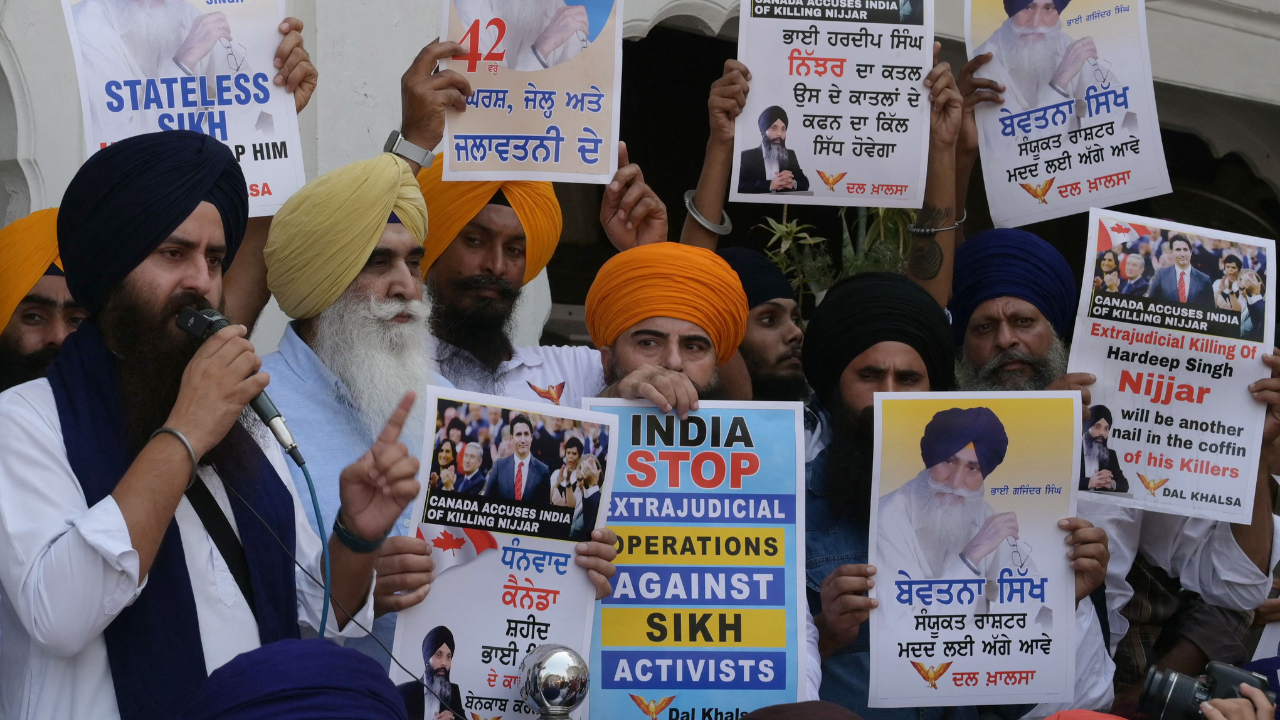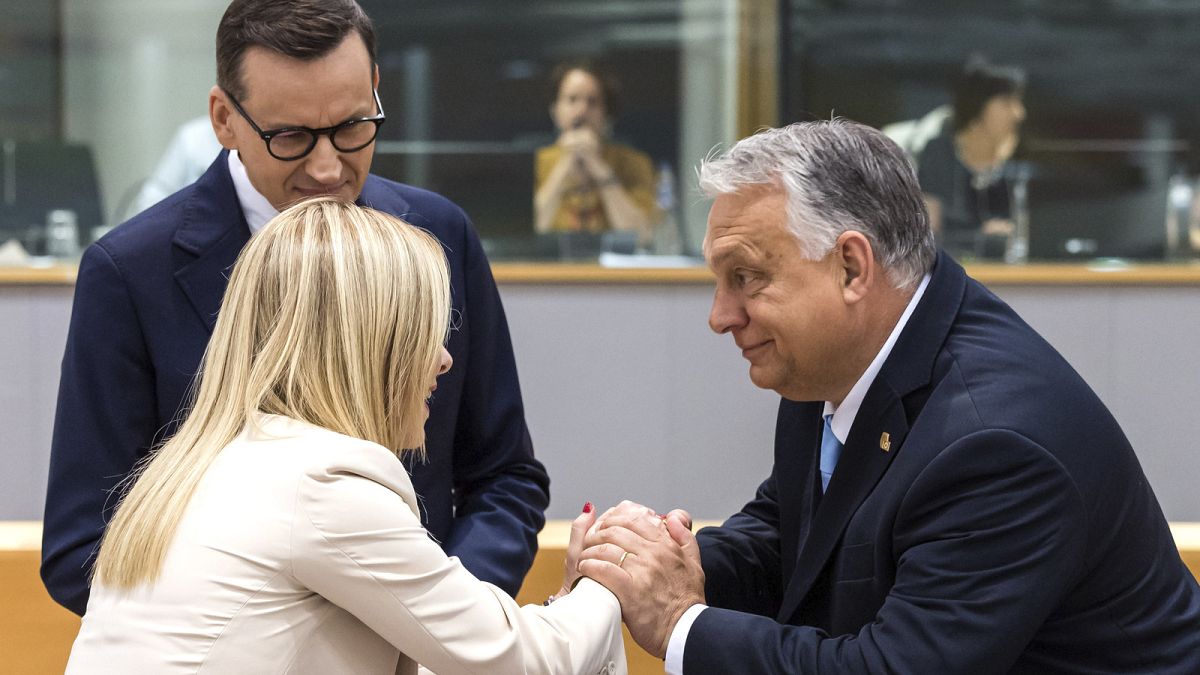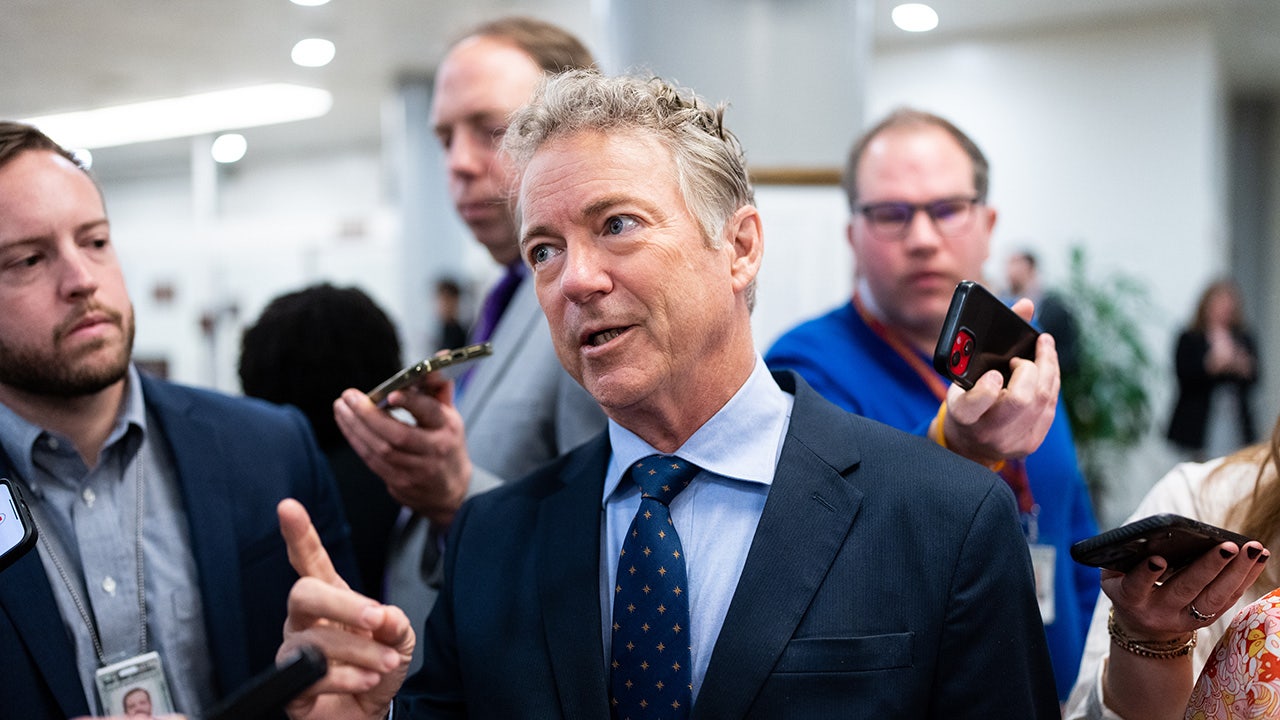World
EU institutions reach deal on anti-SLAPP law protecting journalists

An agreement on the law was found in the early hours of Thursday.
The European Parliament and member states reached an agreement on an anti-SLAPP law designed to increase protection for people and organisations targeted by “strategic lawsuits against public participation”.
The victims of these are usually journalists, employees of civil organisations, and activists, with the lawsuits typically initiated by large companies and politicians.
A final position on the regulation proposed by the European Commission has now been agreed upon by the EU institutions.
“Democracy cannot work without free and independent media,” Anitta Hipper, Commission spokesperson, told reporters on Thursday.
“This is why the Commission welcomes the political agreement reached by the European Parliament and the Council early this morning at 2.30 a. m. on the new EU rules protect those targeted with strategic lawsuits, against public participations.”
The purpose of such lawsuits is to dissuade the sued person or entity from revealing connections and cases of suspected corruption in lengthy proceedings.
Last year, 160 such cases were identified in the EU. Tiemo Wölken, a German socialist MEP who was in charge of the file, said he is satisfied with the result.
“Cross-border cases are covered by this new law, and we offer a high level of protection for journalists,” Wölken told Euronews in an interview.
“They can claim also damages, for example, and there is an accelerated procedure in cases of manifestly unfounded cases.
“So, the court proceeding can stop very quickly. This will save a lot of money, a lot of resources, and will help journalists in defending against SLAPP cases.”
One important part of the deal is that member states will not recognise unfounded or abusive judgments made outside the EU.
The new law must come into force within the next two years.

World
Use of Wegovy and other weight-loss drugs soars among kids and young adults
At 17, Israel McKenzie was so burdened by obesity that he stopped going to high school in person and was embarrassed to speak to people at his restaurant job.
“I was in a really dark place,” says McKenzie, whose weight had climbed to 335 pounds on his 6-foot-1 frame, despite repeated efforts to diet and exercise. “I had given up hope.”
But last year, the weight-loss drug Wegovy helped him shed 110 pounds in nine months, making the rural Tennessee teen part of a surge of adolescents and young adults using diabetes and obesity medications known as GLP-1 receptor agonists, new research shows.
Even as millions of older adults clamor for drugs such as Ozempic and Wegovy, monthly use of the medications soared in people aged 12 to 25. That’s according to the new analysis of dispensing records from nearly 94% of U.S. retail pharmacies from 2020 to 2023.
The report, published in the journal JAMA on Wednesday, used the IQVIA prescription database to compile the first look at the national uptake of GLP-1 drugs among that age group. Nearly 31,000 children aged 12 to 17 and more than 162,000 people aged 18 to 25 used the medications in 2023 alone, said Dr. Joyce Lee, a University of Michigan pediatrician and diabetes expert who led the research.
“What it’s suggesting is that it’s one of the tools in the toolbox and there are more providers prescribing this medication for the population,” she said.
The report shows that the number of 12- to 25-year-olds using any GLP-1 drug — including older medications first approved to treat diabetes in 2005 and for weight loss in 2014 — climbed from about 8,700 a month in 2020 to more than 60,000 a month in 2023, a nearly 600% increase. The rise occurred even as prescriptions of other drugs among those patients fell by about 3%.
Those who received the drugs were just a fraction of young people who struggle with obesity, Lee noted. About 20% of U.S. children and adolescents and about 42% of adults have the chronic disease, according to the U.S. Centers for Disease Control and Prevention.
In early 2023, the American Academy of Pediatrics recommended that children and teens with obesity be evaluated early and treated aggressively, including with surgery and medication if warranted.
McKenzie, the Tennessee teen, said he began gaining weight five years ago, during puberty.
“I started turning to food for all of my problems,” he said.
The extra weight made his asthma worse and put him in danger of developing diabetes, his doctor said. He tried to follow medical advice by cutting out sugary soda and snack foods and exercising more, but the efforts failed to make a difference.
“My old doctor told me there was nothing he could do,” he said. “He told me it was my fault.”
In early 2023, McKenzie connected with Dr. Joani Jack, a pediatric obesity specialist at Children’s Hospital at Erlanger in Chattanooga, Tennessee, who regularly prescribes GLP-1 drugs for kids.
“I told him I’ve seen 10 other people just like you today and we have lots of tools and treatment options,” Jack said. Those typically include intensive behavioral and nutrition interventions combined with medication, if necessary.
In McKenzie’s case, Jack prescribed the weight-loss drug Wegovy, which in late 2022 was approved for use in U.S. children over age 12. More than 6,000 kids in that age group received Wegovy in 2023, the new data show. More than 7,600 received Ozempic, which is approved to treat diabetes in adults, but can be used off-label in adolescents. Others received older GLP-1 drugs such as Saxenda and Trulicity.
McKenzie said he had no notable side effects from the medication, but Lee noted that some young people report nausea, vomiting or constipation, including symptoms so serious that they stop the drugs.
It’s important to understand the surging use of these medications in young people, Lee said. The drugs are meant for continuing use, so “we really need to think about the long-term safety and effectiveness of these medications for this population,” she said.
In addition, the drugs are expensive and often difficult to obtain, either because of supply problems or because they’re not covered by insurance.
Notably, government-run Medicaid plans paid for nearly half of the GLP-1 drugs prescribed to 12- to 17-year-olds and about a quarter of those used by people aged 18 to 25, the research found. Commercial insurance covered care for nearly 44% of the younger kids and about two-thirds of those who were older.
Today, McKenzie says his asthma is better and he looks forward to interacting with co-workers and friends.
“I have a lot of self-confidence now, a lot more than I used to,” he said. “It has changed everything.”
___
The Associated Press Health and Science Department receives support from the Howard Hughes Medical Institute’s Science and Educational Media Group. The AP is solely responsible for all content.
World
Indian government employee accused of directing foiled assassination plot can be extradited to US, court says

- A petition by an Indian man who attempted to avoid extradition to the U.S. has been rejected by the Czech Constitutional Court.
- Nikhil Gupta is accused of directing a foiled plot to kill a Sikh separatist on American soil.
- Gupta was arrested by Czech authorities in June last year when he traveled from India to Prague.
The Czech Constitutional Court rejected on Wednesday a petition by an Indian man trying to avoid extradition to the United States, which suspects him of involvement in an unsuccessful plot to kill a Sikh separatist on American soil.
A final decision on whether to extradite Nikhil Gupta will be made by Justice Minister Pavel Blazek.
The court said it ruled that lower courts had given due consideration to aspects that may prevent extradition, rejecting the complaint brought by Gupta. It also rejected arguments that the case was political.
“The Constitutional Court did not find any circumstance for which declaring extradition admissible would lead to a violation of any of the constitutionally guaranteed fundamental rights and freedoms,” the court said in a statement.
INDIAN GOVERNMENT EMPLOYEE ACCUSED OF DIRECTING FOILED ASSASSINATION PLOT OF SIKH ACTIVIST ON US SOIL
“For the complainant, this brings the proceedings before the Czech courts to an end.”
Activists of the Dal Khalsa Sikh organization, a pro-Khalistan group, stage a demonstration demanding justice for Sikh separatist Hardeep Singh Nijjar, who was killed in June 2023 near Vancouver. The Czech Constitutional Court rejected on Wednesday a petition by an Indian man trying to avoid extradition to the United States, which suspects him of involvement in an unsuccessful plot to kill a Sikh separatist on American soil. (NARINDER NANU/AFP via Getty Images)
A spokesman for the Justice Ministry said Blazek would evaluate the decision before making a ruling on the extradition itself.
Gupta has been accused by U.S. federal prosecutors of working with an Indian government official on a plot to kill a New York City resident who advocated for a sovereign Sikh state in northern India.
Gupta was arrested by Czech authorities in June last year when he traveled from India to Prague.
The Czech Republic has in the past agreed to U.S. extradition requests.
World
Ombudsman probes Commission's senior staff 'revolving door'

The move of an experienced senior official to a private law firm has prompted a probe by Emily O’Reilly, responsible for investigating suspected maladministration.
The latest move of a senior European Commission antitrust official to a private law firm has prompted a probe by the EU’s Ombudsman, who is worried about conflicts of interest.
Revolving doors between the private and public sector can have a “corrosive effect” on public trust, fueling euroscepticism and undermining EU interests, said Emily O’Reilly, in a letter published today (22 May).
In an 8 May press release, law firm Paul, Weiss announced the hire of Henrik Morch, a director in the Commission’s antitrust arm with a 30-year career.
The New York-based law firm cited Morch’s “extensive experience” in handling merger cases as a benefit to the law firm’s clients – a perhaps unfortunate turn of phrase that raised particular hackles for O’Reilly.
“The clear impression is that the Commission has allowed one of its senior officials to work for a non-EU company that anticipates major benefits from that inside knowledge,” said O’Reilly, who investigates suspected maladministration in EU institutions.
“As this move was not forbidden, the Commission should, without delay, publish the restrictions it has placed on the move,” added her letter, dated 17 May.
To make matters worse, she said, Paul, Weiss hasn’t been clear about its Brussels activities, and the Commission hasn’t said if it will impose any restrictions on Morch’s work with it.
O’Reilly called for the Commission to reform its practices in a probe which closed in 2022 – and which specifically concluded that officials from the competition directorate-general, DG COMP, should be banned from moving to work at private firms that work in related issues.
That followed a number of controversial hires, including the move of Carles Esteva Mosso, a deputy director-general at DG COMP, to become an antitrust partner at Latham & Watkins, and that of Adam Farkas, executive director of the EU’s banking agency, to lobby group the Association for Financial Markets in Europe.
Recent research by Transparency International, published just weeks before the bloc goes to the polls, shows that MEPs collectively earn millions of euros from jobs additional to their lawmaker salary.
Those extra paid positions are permitted under current rules – but the lobby group cites concerns over conflicts of interest, particularly when MEPS work for company that lobby the EU.
Morch, the Commission and Paul, Weiss did not immediately respond to a request for comment.
-

 World1 week ago
World1 week agoUkraine’s military chief admits ‘difficult situation’ in Kharkiv region
-

 Education1 week ago
Education1 week agoVideo: Protesters Scuffle With Police During Pomona College Commencement
-

 Movie Reviews1 week ago
Movie Reviews1 week agoAavesham Movie Review
-

 World1 week ago
World1 week agoEU's divided right wing can disrupt if it finds greater unity: experts
-

 News1 week ago
News1 week agoStudent protests caused mostly minor disruptions at several graduation ceremonies
-

 News1 week ago
News1 week agoNevada Cross-Tabs: May 2024 Times/Siena Poll
-

 World1 week ago
World1 week agoPro-Palestinian university students in the Netherlands uphold protest
-

 Politics1 week ago
Politics1 week agoWhite House walks diplomatic tightrope on Israel amid contradictory messaging: 'You can't have it both ways'


















